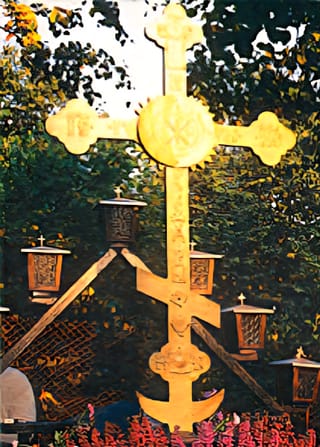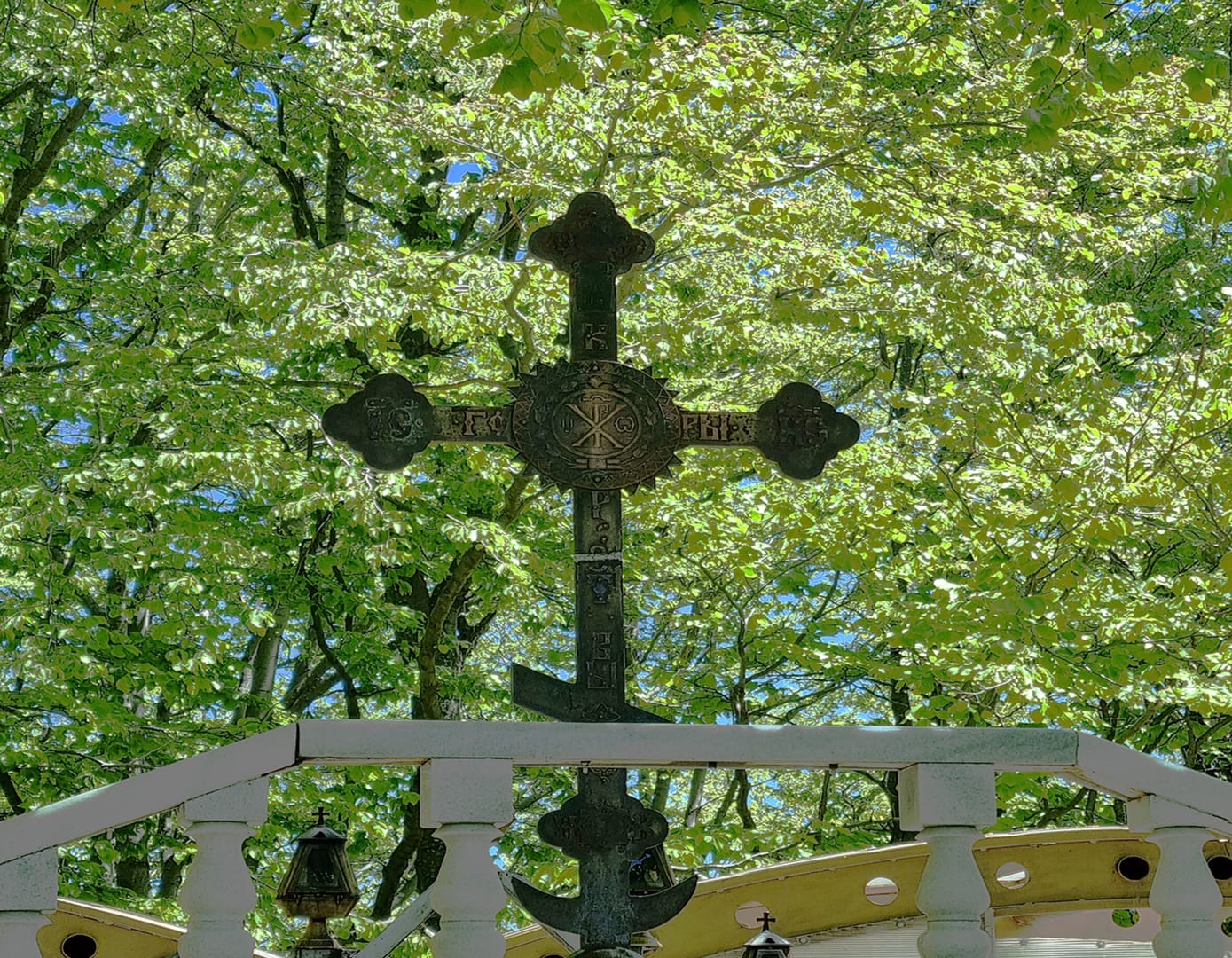History
The great steward of the Byzantine Empire, the Georgian Gregory Bakuriani founded in 1083 the Bachkovo monastery, endowed it with vast land property, populated it with 50 monks from Georgia and made up a monastery law. At that time Bulgaria was under Byzantines authority /1018-1185/. A theologian school was founded within the monastery and notable Georgian teachers like Joan Petritzi, Ikal-toeli, Arsen and many others taught there.
And in the "To the sacred treasures and honest holy icons" Bakuriani wrote: "I gave the monastery two icons made of golden alloy and parts of the holy Christ's cross. The bigger icon was called "Holy transfiguration of God" and the smaller one "Holy Virgin". As it is known, the holy Tsaritza Elena moved from Jerusalem to Constantinople most of the remains of Christ's cross. As an attendant of the Byzantine emperor Aleksii I Komnin, Gregory acquired some of the fragments of this holy relic, and immured them into the two mentioned icons.
The monastery law forbids married Georgians to live in the monastery. For the multitude of the servants, it has been said, that a village called "Ivertze" was built. This settlement, surrounded by wide fertile lands, forests and meadows abundant in pastures, turned into a rich agriculture and stock-breeding place. Numerous herds of the monastery pastured around the picturesque place "Cross forest", known also as "Gradishte", that looked like in the shape of a cross. Right here were the monastery dairy farms and big housings with the church "Holy Trinity".

Shortly, at Cross forest, a new monastery under the authority of the Bachkovo monastery, had been erected and called Troitzki. It quickly became one of the people's favorite place for visitations, especially for those who lived in the villages nearby, including the people of Ivertze. The monks of Cross forest and the inhabitants of Ivertze village asked the abbot of the Bachkovo monastery to give them the big Bakuriani's icon with the immured parts from Christ's cross in it, so they can adorn the new Troitzki monastery, where the hand of the Creator marvelously has carved the cross sign at this magnificent place. The legend says that every year on Cross day - during a magnificent liturgy attended by numerous Christians, the icon "Holy Transfiguration of God" has been carried from Cross forest to the Bachkovo monastery and stayed there for the night-long vigil, and on the next day after the holy liturgy, festively returned back at Cross forest.
Till the end of XII-th century the monk brotherhoods of the Bachkovo and Troitzki monasteries were supported mostly by new Georgian recruitments. When Bulgaria fell under the Ottoman yoke in 1393 at the Bachkovo monastery came in power the Greek despotism and what Bakuriani were afraid of the most had happened: the Greeks chased away the last Georgian monks, destroyed the magnificent tomb of the brothers Gregory and Abasiy Bakuriani in the main temple and managed to wipe out everything connected with the Ivertze village.
Restless days and dark times had come to that part of the Rhodope mountain in the beginning of XV-th century when along the current of river Chaia and the Lacki gorge suddenly were rushed by the numerous hordes of Dzhadit Ali Pasha. They plundered, brought dishonour and slaughtered all over the place. In a hurry, the frightened monks of Cross forest buried into the ground the precious icon along with the remains of the Christ's cross and other valuables. The monks were slaughtered, the church and the buildings were robbed, violated and burned down, the herds were taken away by the invaders. In the villages nearby such as Dryanovo, Telitza, Mostovo, Dzhurkovo etc, the Pasha who brought with himself imams, left some of them with a task to turn the natives into muslims by force. The Bulgarian Mohammedans in these villages however kept their language and customs, their Bulgarian folk songs and legends, they continued to come to Cross forest for the "Holy Trinity" and to make a sacrificial rite, and to participate in liturgy for Cross day.
Rediscovering the life giving Christ's cross
As mentioned a little above, Gregory Bakuriani immured particles of Christ's cross into two icons which he gave to the Bachkovo monastery. Although the history is well known, we will write down again a fragment of it about the miracle of Christ's cross. A diligent assistant of Emperor Constantine was his mother Elena, her Christian activities were mostly involved with charity for the poor and constructions of many temples. The name of Tsaritza Elena is associated with a great event for the Orthodox Church - the discovering of the life giving Christ cross.
To celebrate the victory of her son Tsar Constantine against Maksentii and his proclamation for Emperor of the whole Roman Empire afterwards, Tsaritza Elena decided to build impressive temple on Golgotha's hill - St. Resurrection of Christ. When they started to dig for the foundations, they found the three crosses - Christ's and those of the two robbers. All of the crosses looked very similar and no one managed to determine which one is Christ's. At the same place and time a funeral procession was taking place. Tsaritza Elena stopped the procession and touched the dead body with the first and the second cross. Nothing happened. But when she touched the deceased with the cross on which Jesus Christ was crucified a miracle happened: the dead man came back to life and stood up. That miracle rejoiced the mother and the poor relatives who accompanied the funeral and they started to embrace the resurrected boy. Others who accompanied Tsaritza Elena embraced and started to kiss Christ's cross.
Thus, the cross from a punishment tool became an instrument of salvation. The cross became a symbol for the Christians, and with it they defeated every form of evil. That happened on September 14th - the day appointed to worship the Holy Cross and named - Adoration of the Holy Cross. Every year on 14th of September the Holy Cross is taken out for a submission and as much sick people seek God's grace, as much of them receives it.
As we know, Christianity has spread throughout the lands, but since there were no vehicles except donkeys, horses, camels and boats, people couldn't come to worship the Holy Cross. Prudent Christians decided to divide Christ's Cross in three parts: one remained in Jerusalem, another one was sent to Rome, and the third part in Constantinople (Istanbul). The part that was given to the Constinople Patriarchate was put in a special chest, covered with gold and silver.

